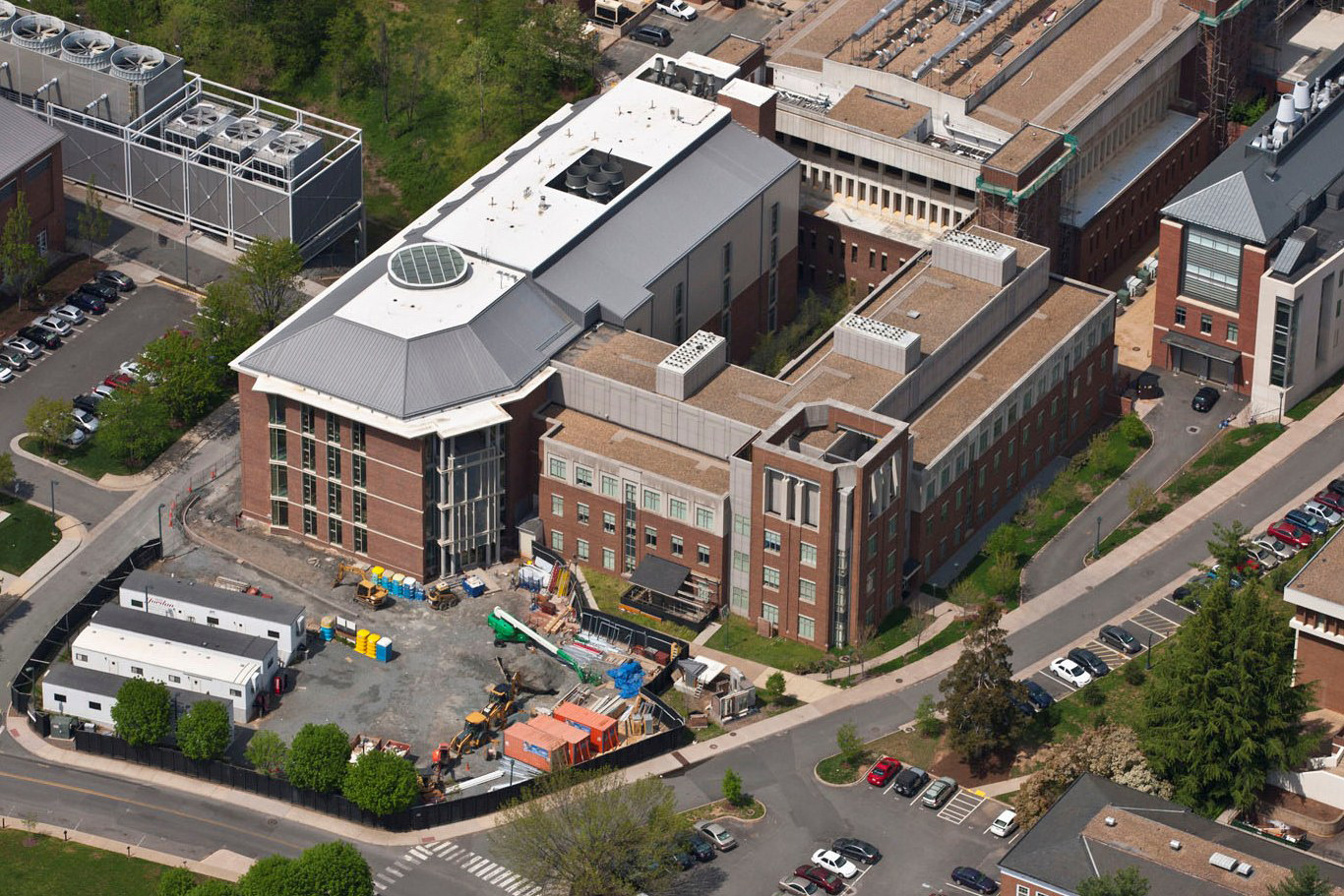October 17, 2011 — The College and Graduate School of Arts & Sciences at the University of Virginia will dedicate its new, state-of-the-art Physical and Life Sciences Research Building on Friday at 3 p.m.
The five-story, 100,000-square-foot building offers modern research laboratory space for more than two dozen faculty members and their research groups, and will house members of the biology, chemistry and physics departments. The building is also home to scientific equipment and facilities shared by research teams in the College and other parts of the University.
"This new laboratory building is an essential investment in the future of our research program in the sciences," Arts & Sciences Dean Meredith Jung-En Woo said. "Its flexible lab space and advanced instruments will support the work of Arts & Sciences faculty – and other scholars from across Grounds – as they push the frontiers of science and seek solutions to many of the most pressing issues of our age."
In addition to Woo, University President Teresa A. Sullivan and Jim Galloway, associate dean for the sciences, will speak at the dedication, which will be held at the new building at 74 Geldard Drive.
The department chairs from the biology, chemistry and physics departments – professors Douglas R. Taylor, W. Dean Harman and S. Joseph Poon – will participate in a ribbon-cutting following the remarks.
Located adjacent to the Chemistry Building and Gilmer Hall, the Physical and Life Sciences Research Building provides cutting-edge research facilities, including a wet lab and low-vibration space designed for flexible, interdisciplinary use.
The building was completed in just 39 months, as opposed to a typical 54-month schedule, and used less than $75 million of an approved $88.9 million budget.
The architectural firm of Bohlin, Cywinski, Jackson of Pittsburgh designed the building, and W.M. Jordan Company of Richmond managed the construction. The building is LEED-certified at the silver level and employs daylight harvesting, energy recovery and motion sensor systems activation to save energy.
The five-story, 100,000-square-foot building offers modern research laboratory space for more than two dozen faculty members and their research groups, and will house members of the biology, chemistry and physics departments. The building is also home to scientific equipment and facilities shared by research teams in the College and other parts of the University.
"This new laboratory building is an essential investment in the future of our research program in the sciences," Arts & Sciences Dean Meredith Jung-En Woo said. "Its flexible lab space and advanced instruments will support the work of Arts & Sciences faculty – and other scholars from across Grounds – as they push the frontiers of science and seek solutions to many of the most pressing issues of our age."
In addition to Woo, University President Teresa A. Sullivan and Jim Galloway, associate dean for the sciences, will speak at the dedication, which will be held at the new building at 74 Geldard Drive.
The department chairs from the biology, chemistry and physics departments – professors Douglas R. Taylor, W. Dean Harman and S. Joseph Poon – will participate in a ribbon-cutting following the remarks.
Located adjacent to the Chemistry Building and Gilmer Hall, the Physical and Life Sciences Research Building provides cutting-edge research facilities, including a wet lab and low-vibration space designed for flexible, interdisciplinary use.
The building was completed in just 39 months, as opposed to a typical 54-month schedule, and used less than $75 million of an approved $88.9 million budget.
The architectural firm of Bohlin, Cywinski, Jackson of Pittsburgh designed the building, and W.M. Jordan Company of Richmond managed the construction. The building is LEED-certified at the silver level and employs daylight harvesting, energy recovery and motion sensor systems activation to save energy.
— By Rob Seal
Media Contact
Article Information
October 17, 2011
/content/uva-college-arts-sciences-dedicate-physical-and-life-sciences-research-building

